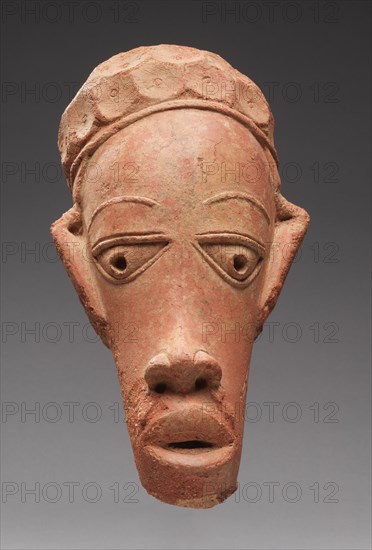
Sujet
Head, 600 BC-AD 250. Creator: Unknown.
Légende
Head, 600 BC-AD 250. The Nok culture of central Nigeria initiated sub-Saharan Africa?s earliest known sculptural tradition by around 600 BC. Artists modeled coarse-grained clay by hand to produce human and animal effigies of unknown function. Although probably a fragment of a nearly life-size male seated figure, this head is remarkably well preserved. The artist combined boldly exaggerated proportions with carefully rendered details. These include indentations on the eyelids and brows, scarification on the cheeks, and teeth inside the parted lips. This head is an excellent example of the style of Katsina Ala, from the southeastern portion of the Nok civilization?s distribution area. The Nok civilization is considered to be the oldest Iron Age culture of sub-Saharan Africa. Nok sculptures were first discovered in 1928 during tin-mining operations; others were discovered in riverbeds or under the roots of trees. The Nok terracottas may have been part of a shrine or temple or were placed on a tomb. The identities of the portrayed figures are also unknown, but the adornments and elaborate hairstyles and headdresses seem to indicate that they represent notables or leaders.
Crédit
Photo12/Heritage Images/Heritage Art
Notre référence
HRM19F85_272
Model release
NA
Property release
NA
Licence
Droits gérés
Format disponible
63,5Mo (3,4Mo) / 32,8cm x 48,5cm / 3875 x 5724 (300dpi)